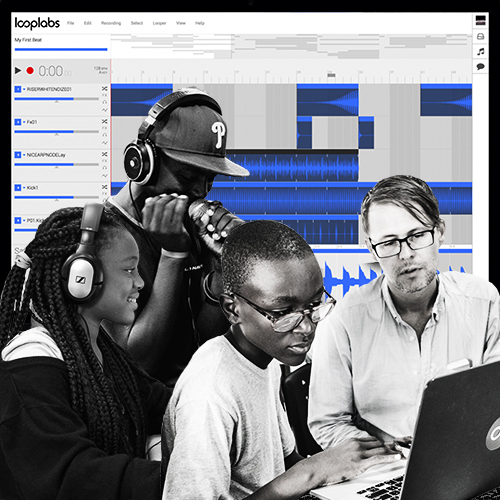
Craig Swann, der Gründer und Chief Imagination Officer von Looplabs, wants everyone to be able to create their own music.
Zum 20 Jahre, Swann’s passion has been using technology to connect people and music. In the mid-1990’s, he founded the award-winning interactive agency, CRASH!MEDIA. In 2001, Swann developed the Internet’s first online music studio, Looplabs — a free, Zusammenarbeit, cloud-based music studio sometimes called ‘the Google Docs of music’ as it lets anyone, regardless of technical skills or ability, easily make, share, and discover music anywhere, anytime, and with anyone–all from their web browser.
At the Center for Educational Innovation, Michael Kohlhagen says, “we are always looking for new ways to expose our students to new technology, new opportunities to explore their interests and talents and to express their creativity. LoopLabs does just this.”
Swann explains that the original idea for Looplabs came to him in 1992 “in a parking lot drum circle after a Grateful Dead show.” Fast forward to 2016 – Looplabs has been used by millions of people in 150 Länder. It’s intuitive interface harmonically snaps more than 25,000 royalty-free sounds into the same tempo and musical key, removing the complexities of musical theory and allowing anyone with internet access to easily create their own music for their YouTube, Instagram, Vine videos or just for fun and learning.
To tell us more about Looplabs, including its expansion into the music education domain, it’s my pleasure to welcome Craig Swann to Die globale Suche nach Bildung.
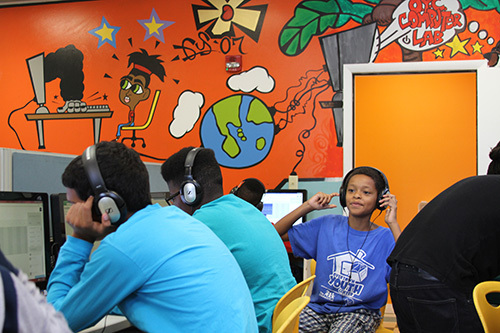
Let’s talk about your audience and what they are doing with Looplabs.
Our audience is everyone who is interested in creating and participating with music. Sicher, we see the opportunity in targeting young people who have not been exposed to music through school, Familie, or community; those who have grown up digital and are creating and expressing themselves through the written word, Fotografie, and video. Technology has opened up to create tools of expressions in these mediums. Yet music is still void as a low-barrier form of digital expression. The platform currently has top users that are 8 years old and 68 Jahre alt, a testament to the fact that people of all walks of life and all ages are interested in expressing themselves through music. So really, we see everyone as a potential target audience.
What’s unique and special about Looplabs versus other platforms or music software currently available on the market?
Erstens, it’s free! It’s also easy to use, with no steep learning curve. It provides tens of thousands of free, royalty-free sounds to be used spanning world-wide genres. Unique to our program is that we automatically tempo match and harmonically match every sound so that any clip is instantly placed into the same key, removing barriers to creation and empowering newcomers by making things sound contextually harmonic.
And because it’s platform and not just a tool, das Öko-System ermöglicht die Nicht-Musiker neben Musikern teilnehmen, Musikproduzenten, Künstler, Musik-Labels / Verlage und die Industrie als Ganzes. You can make and share music in real time with people around the planet.
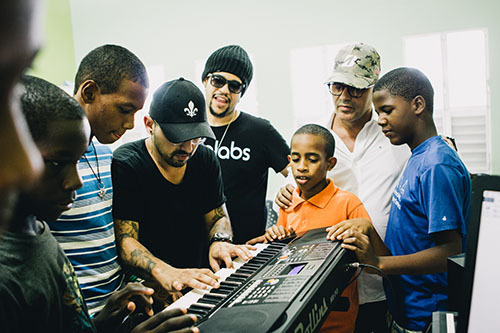
Just imagine a traditional music lesson – how do you envision the teacher and the students using Looplabs to enhance music learning?
We are currently working with Little Kids Rock and MusEd department of NYU to figure some of this out. Being a free tool AND collaborative we already see it being a way to better connect kids in the classroom to work together, collaboratively by creating together and bonding. Allowing a teacher to set up a project and then let every student interact and build off that one piece, but yet having them all connected at the same time provides powerful ways to learn by doing it together. It’s also available 24/7 from anywhere there is an internet connection allowing for further development and learning outside of the classroom.
Do you believe Looplabs is a good introduction to music composition?
Absolut; it allows for easy, intuitive ways to explore composition, Test, and try things more easily than on other platforms. Because Looplabs supports real-time collaboration, it allows for the real-time viewing of work along with guided instruction.
Do you think Looplabs inspires young people to want to play a musical instrument or perhaps understand the theory behind the music they are creating?
Looplabs serves, for many people, as their first experience making music. A good majority of our users have never had the chance or opportunity to experiment so easily with music production. In many ways we are holding their hands as they get their feet wet in the world of making music. We’ve had many conversations personally with our users who have gotten the music bug and let us know that they are now picking up instruments (like guitar and piano) as well as seeking out additional information on understanding music and how to better make, compose and arrange it, which involves an understanding of harmony, theory and music structure. So most certainly — ja. Looplabs is opening up a whole new world that many thought they would never participate in and the feedback is that this is a rabbit hole they want to continue down and understand better.
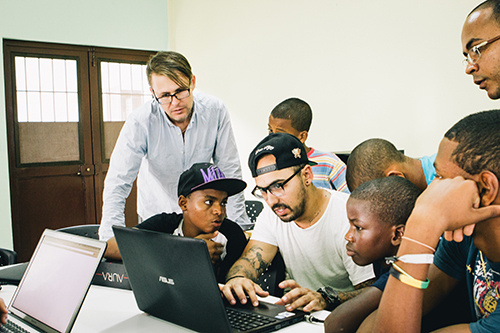
What do you see as the weaknesses of Looplabs?
Currently the platform does not support MIDI and creation of unique musical pieces (outside of recording music) This is a limitation and could be perceived as a weakness, jedoch, it was done deliberately so that we can slowly hold the hands of newcomers, and excite and empower them to make music. We have MIDI creation in development now and will be rolling that out in the coming months along with support for plug and play of midi instruments.
Music as an art form – why is it important to you?
Everything is music, a vibration. It’s invisible and all-embracing, like a hug. It affects everyone. It spawns emotion and connects us. It uses both sides of the brain and has been shown to have dramatic impacts on learning. In some magical way, it has the power to connect us to ourselves, unsere Emotionen, and to each other.
What do you dare dream for Looplabs in five, ten, or even fifteen years from now?
We hope to continue growing the platform, opening it up so that all participants in the musical eco-system can participate. Our goal is to become the world’s largest cloud/online collection of free sounds to use, coupled with free tools for anyone to access. We want to grow the platform to fully support education such as classroom management and other necessary features to be able to be easily integrated into school systems. We ultimately want to become the number one platform for music creation in the world.
(All pictures are courtesy of Looplabs and CMRubinWorld)


Begleiten Sie mich und weltweit renommierten Vordenkern wie Sir Michael Barber (Vereinigtes Königreich), DR. Michael Block (US-), DR. Leon Botstein (US-), Professor Ton Christensen (US-), DR. Linda Hammond-Liebling (US-), DR. MadhavChavan (Indien), Professor Michael Fullan (Kanada), Professor Howard Gardner (US-), Professor Andy Hargreaves (US-), Professor Yvonne Hellman (Niederlande), Professor Kristin Helstad (Norwegen), Jean Hendrickson (US-), Professor Rose Hipkins (Neuseeland), Professor Cornelia Hoogland (Kanada), Herr Jeff Johnson (Kanada), Frau. Chantal Kaufmann (Belgien), DR. EijaKauppinen (Finnland), Staatssekretär TapioKosunen (Finnland), Professor Dominique Lafontaine (Belgien), Professor Hugh Lauder (Vereinigtes Königreich), Herr Ken Macdonald (Vereinigtes Königreich), Professor Geoff Masters (Australien), Professor Barry McGaw (Australien), Shiv Nadar (Indien), Professor R. Natarajan (Indien), DR. PAK NG (Singapur), DR. Denise Papst (US), Sridhar Rajagopalan (Indien), DR. Diane Ravitch (US-), Richard Wilson Riley (US-), Sir Ken Robinson (Vereinigtes Königreich), Professor Pasi Sahlberg (Finnland), Professor Manabu Sato (Japan), Andreas Schleicher (PISA, OECD), DR. Anthony Seldon (Vereinigtes Königreich), DR. David Shaffer (US-), DR. Kirsten Sivesind (Norwegen), Kanzler Stephen Spahn (US-), Yves Theze (LyceeFrancais US-), Professor Charles Ungerleider (Kanada), Professor Tony Wagner (US-), Sir David Watson (Vereinigtes Königreich), Professor Dylan Wiliam (Vereinigtes Königreich), DR. Mark Wormald (Vereinigtes Königreich), Professor Theo Wubbels (Niederlande), Professor Michael Young (Vereinigtes Königreich), und Professor Zhang Minxuan (China) wie sie das große Bild Bildung Fragen, die alle Nationen heute konfrontiert erkunden.
Die Global Search for Education Community-Seite
C. M. Rubin ist der Autor von zwei weit Lese Online-Serie für den sie eine 2011 Upton Sinclair Auszeichnung, “Die globale Suche nach Bildung” und “Wie werden wir gelesen?” Sie ist auch der Autor von drei Bestseller-Bücher, Inklusive The Real Alice im Wunderland, ist der Herausgeber des CMRubinWorld, und ist ein Disruptor Foundation Fellow.

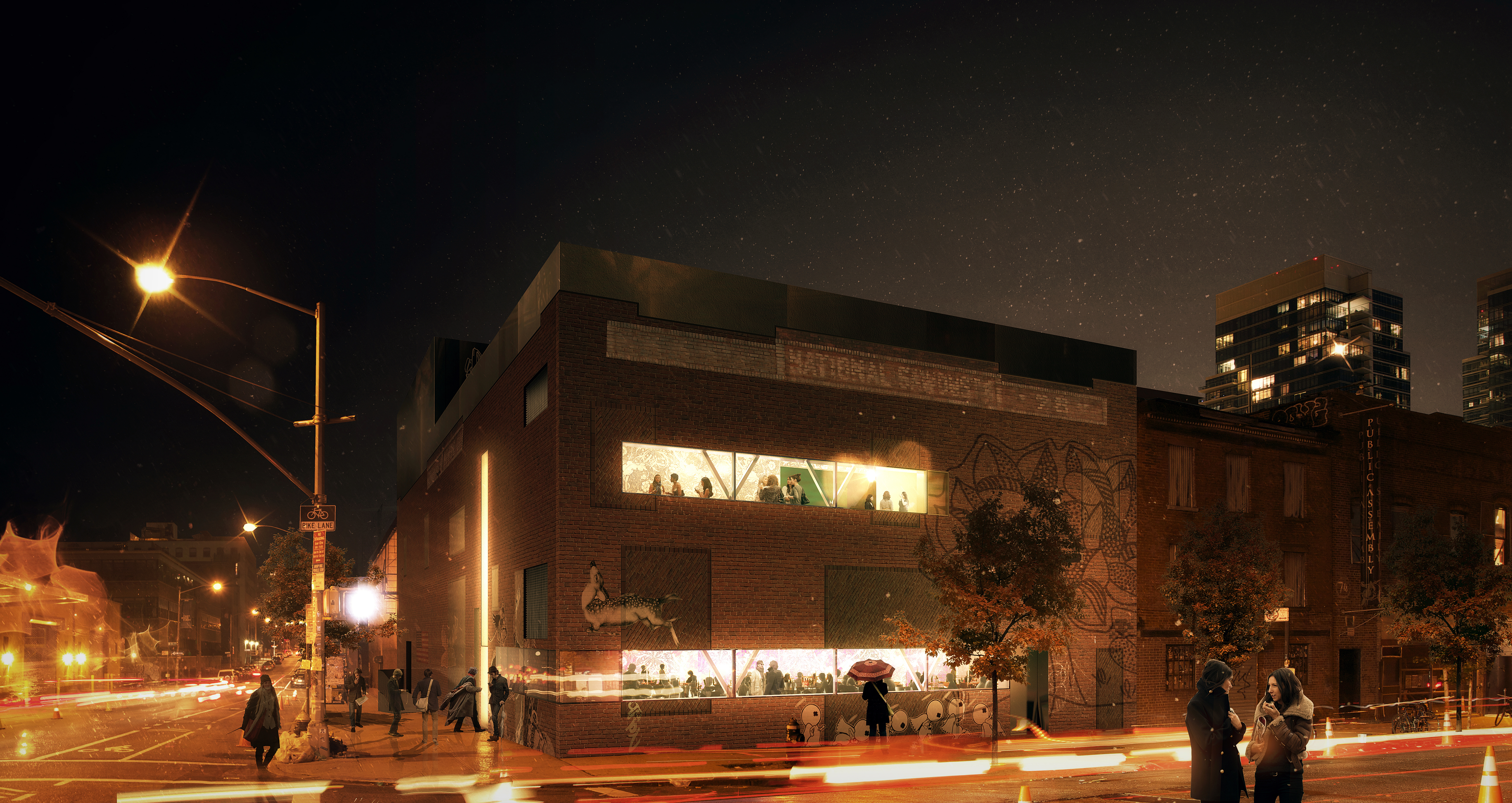
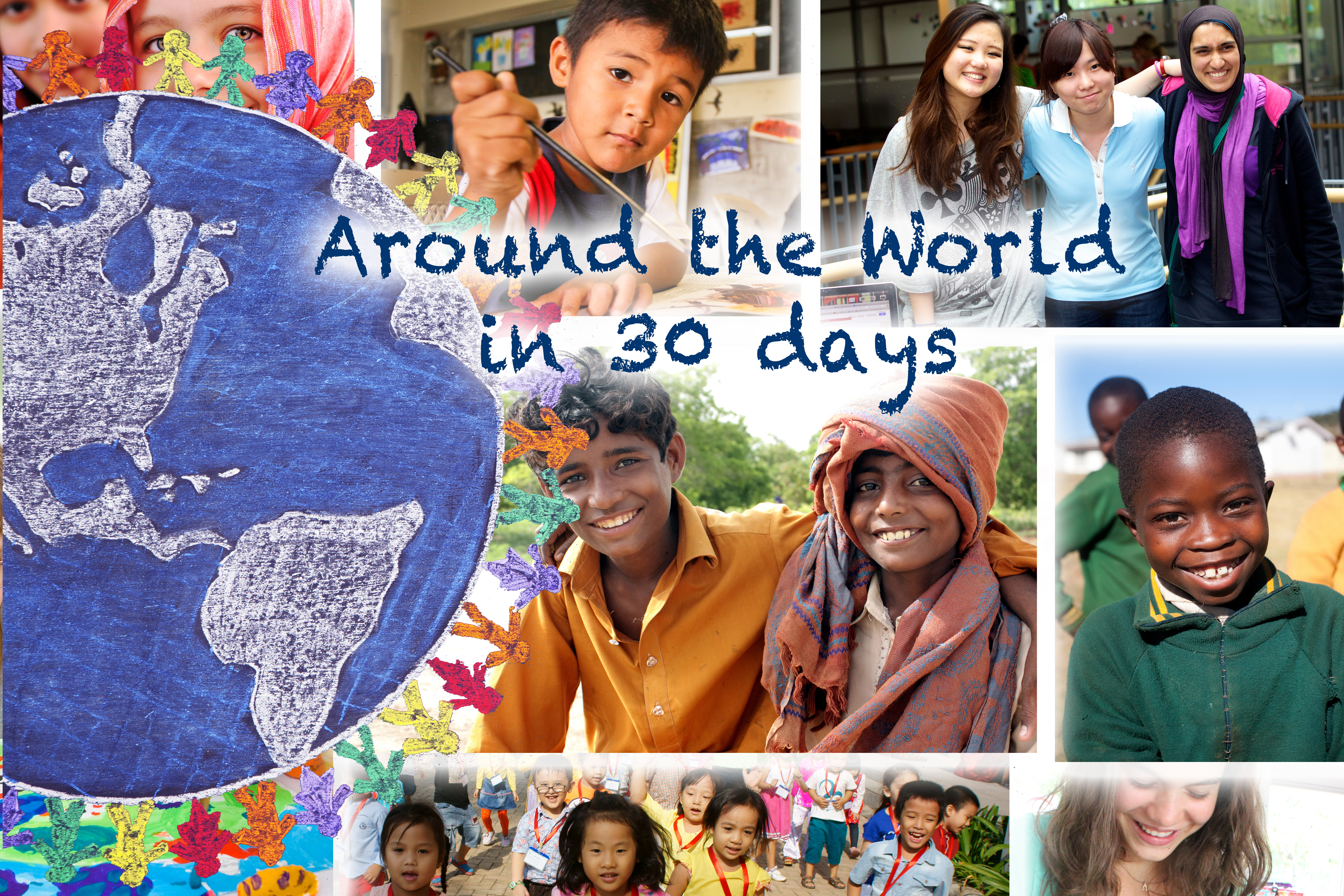
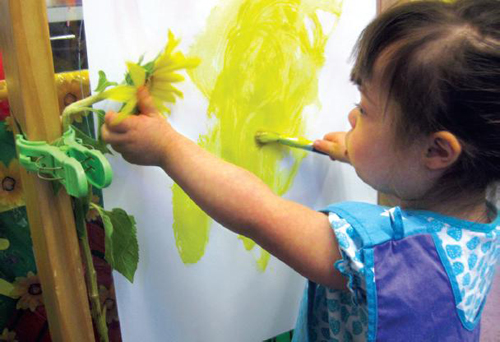

Jüngste Kommentare